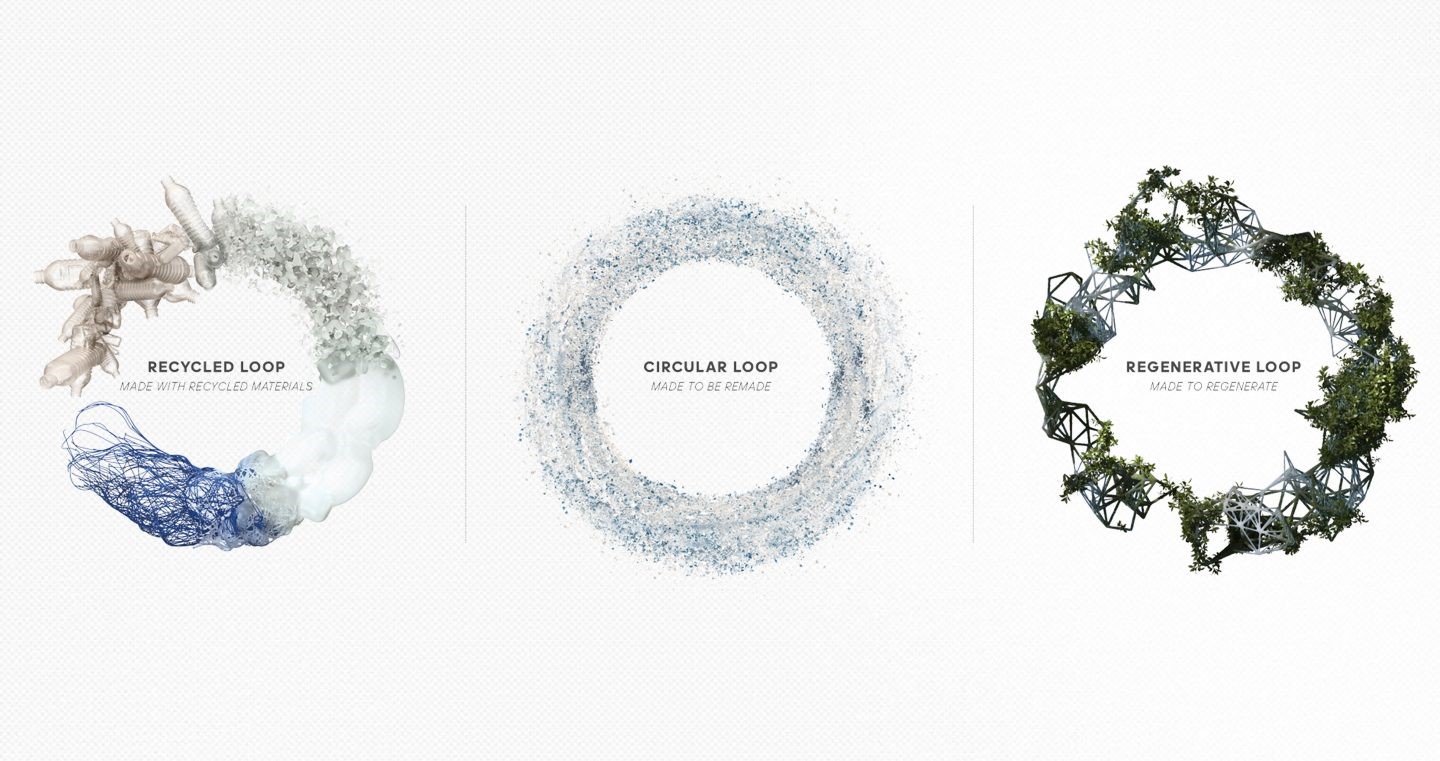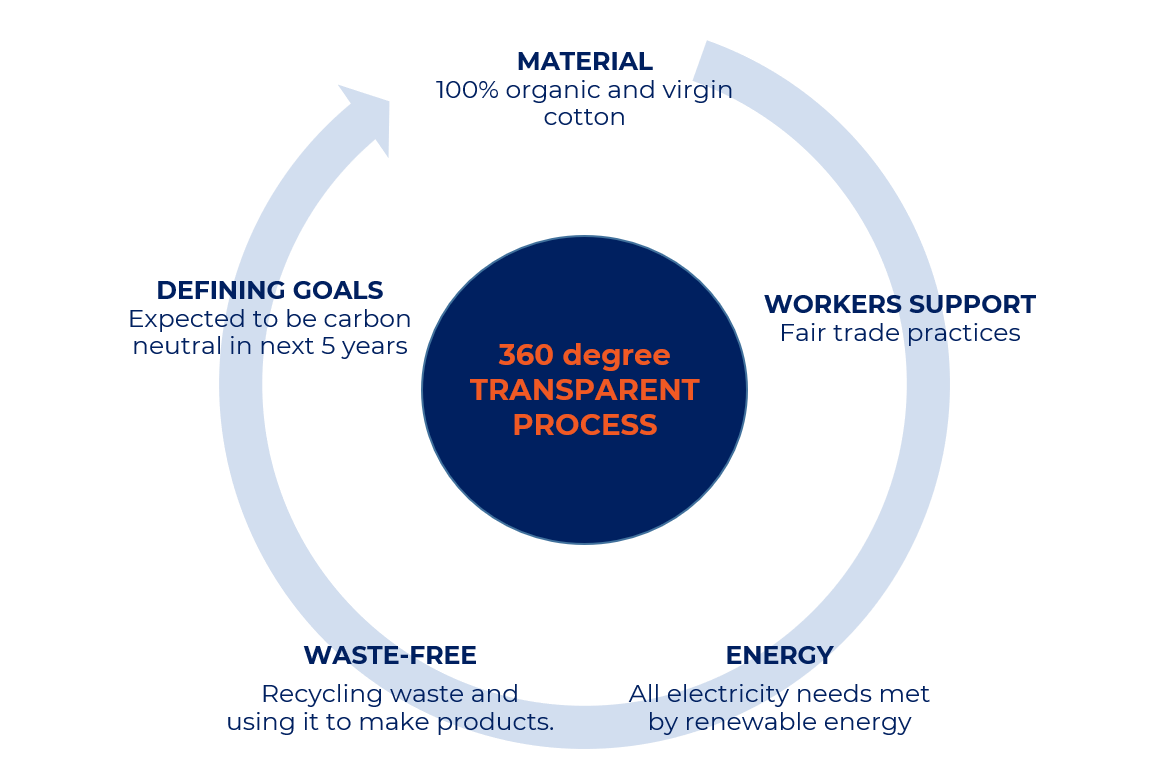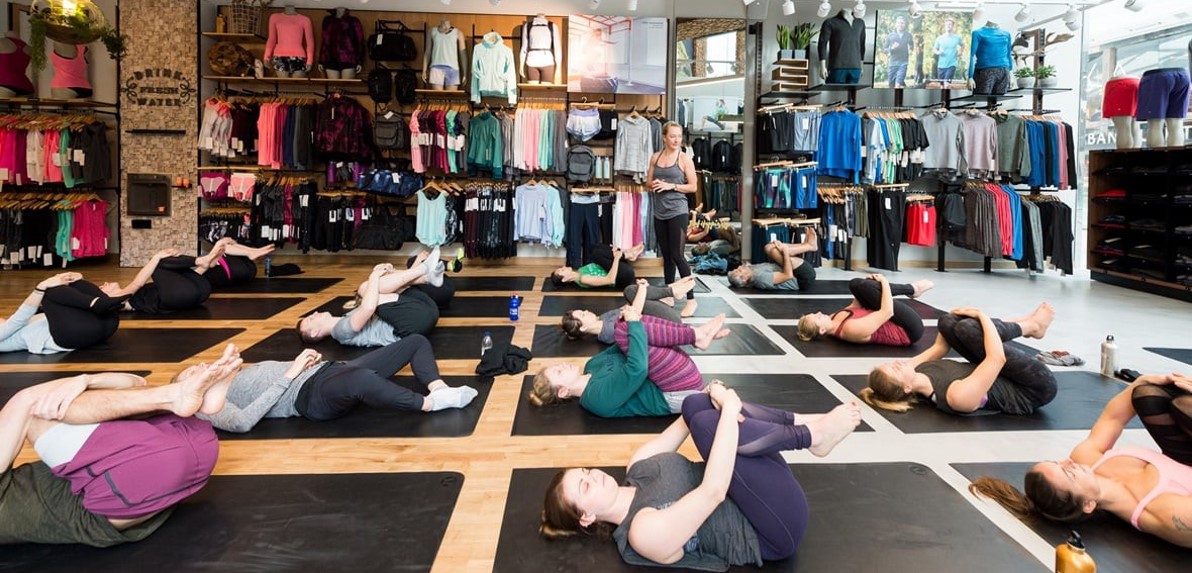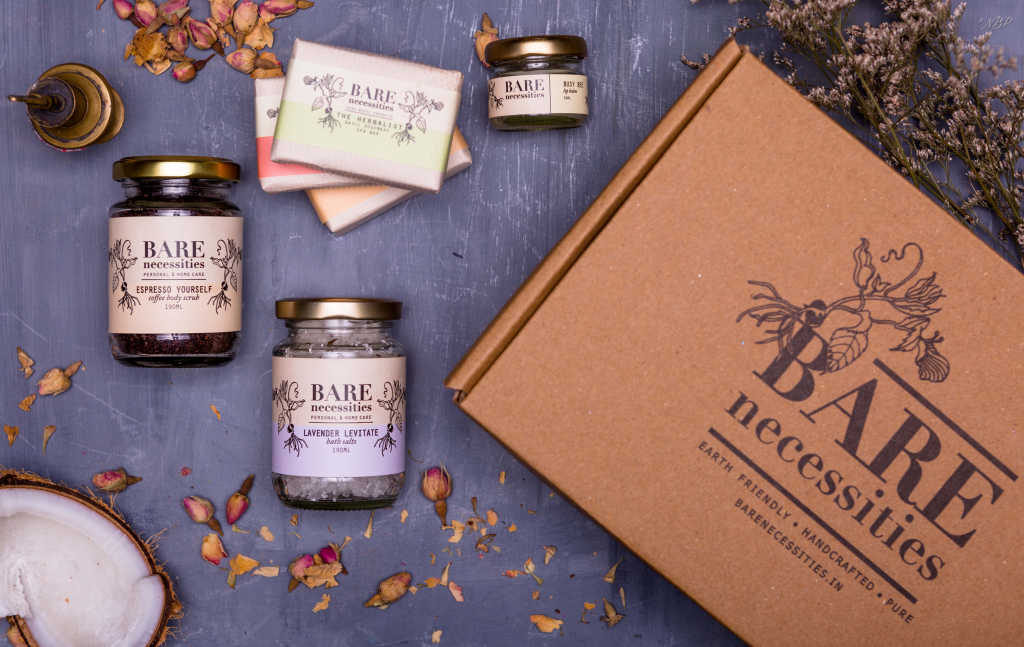
More than just a trend – Sustainability as a process
Today’s brands are increasingly being measured by their efforts to make the world a better place. As we experience the atrocities of climate change at a large scale, integrating sustainability principles has become more important than ever. To define it in simple terms, sustainability is essentially about being empathetic to the surrounding environment and people.
UNDERSTANDING THE CONSUMER

To be able to create something that fulfills consumer needs as well as impacts communities and the environment is one of the greatest keys to success. Understanding the present-day consumer is therefore fundamental for developing a brand that is not only true in its values but profitable at the same time.
Consider these trends:
• According to a survey report by Mckinsey & company, 57% of consumers have made significant changes to their lifestyles to lessen their environmental impact, and more than 60% report “going out of their way to recycle and purchase products in environmentally friendly packaging (Mckinsey & company).”
• Additionally, 67%, and 63% consider the use of sustainable materials and the brand’s promotion of sustainability to be important purchasing factors (Mckinsey & company).
• According to Nielsen’s 2015 Global Corporate Sustainability Report, 66% of consumers would spend more on a product if it came from a sustainable brand (Nielsen 2015).
It is unquestionable that consumers favour sustainable brands that assist them in achieving a better lifestyle. But how does one stand out among its competitors who are all trying to do the same thing? It is therefore advantageous to engage in a brand development process that successfully integrates consumer concerns into its business model.
ALIGN PRODUCTS AND SUSTAINABILITY
Creating a sustainable brand starts with developing sustainable products and services. Ensuring that the products are aligned with a brand’s sustainability efforts is key to connecting to present-day consumers. When it comes to being environment-friendly, it can be challenging to identify the companies that are truly into it and those that are just getting on board with the fleeting trend for green marketing. Adidas is leading the change by innovating using a three-loop strategy in the development of its products. The recycled loop involves products made out of recycled polyester, while the other two focus on products that can be remade or decomposed. Adidas further aims to eliminate virgin plastic from its products and only use recycled polyester by 2024. Additionally, the brand has been committed to developing a responsible supply chain by conserving water and energy in its production practices.


It is also significant to understand that sustainability goes beyond being eco-friendly. It involves a drastic reduction in consumption or the need to replace products. Patagonia addresses this concern by offering the ‘Ironclad guarantee’ which includes repair of damaged products. This guarantee in itself is a result of the strength of the material used to ensure product durability. This furthers leads to less consumption of energy, water, and reduced waste production. From having a transparent process and ethical sourcing of raw materials to environmentally-friendly practices in manufacturing to packaging and shipping, Patagonia is doing it all. Consequently, the outdoor clothing brand tops the list of eco-friendly brands and will be the first one to become carbon neutral in the next 5 years among its competitors. To add to its existing efforts, Patagonia also stays ahead in the market by taking a stand on environmental issues through its eco-friendly messaging as seen in its social media marketing and television commercials.

BRAND STRATEGY
A truly sustainable brand strategy goes beyond eco-friendly products. It involves addressing the social and economical issues as well. When brands become socially responsible, consumers are inspired to focus on the holistic growth of society. With the aim of driving meaningful change, Lululemon Athletica Inc. identified the role that the brand can play to cater to inclusion, community, and, mental and physical well-being. Lululemon’s mission is to create a community hub for people to learn the aspects of healthy living. The athletic apparel brand is known to use the community’s voice to promote its products by collaborating with fitness instructors and hosting yoga sessions in its stores.

Despite all CSR activities, embracing technology has been key in the growth of apparel brands. From innovating new fabrics to developing digital systems that would support the customer needs, there are immense opportunities to scale up as a technology-oriented brand. For instance, Lululemon acquired the Live-stream ‘At-home’ mirror technology to make workouts with a trainer convenient from home.

Connecting with the consumers on an emotional level through brand values does set the corporate apart on numerous levels. Warby Parker disrupted the monopoly in the US market by bringing affordable, designer eyewear to the consumers. The social and economic commitment of Warby Parker is reflected in its practice of producing another pair of eyewear for each purchase for consumers in developing countries. The brand has managed to resonate with millennials leading to a deeper bond due to its ideology of looking beyond pure financial profit.

THE INDIAN WAY
Practices of sustainability are undoubtedly embedded in the Indian culture and society. While the world moves to lead an organic way of life, a lot of these methods can be related to the ingredients found in the Indian diet to the raw materials used in Indian clothing, cosmetics, building materials, etc. The land of Ayurveda and ancient medicine finds itself in the centre of the vegan shift being led by brands such as Kama Ayurveda, Bare Necessities, Forest Essentials, Juicy Chemistry, and others for almost the last two decades. These beauty brands are perfect examples of going back to the roots to provide personal care solutions that are beneficial to both the consumers and the environment.


Furthermore, Indian textile and apparel brands are not far behind in their contribution to nature by using organic fabrics (For example, No Nasties), and upcycled products (For example, Doodlage). The idea of repurposing is a classic reflection of an Indian household which is an ideal setting to learn about minimal waste production. Brands like Doodlage manage to retain the sustainable practices developed at home and yet attach an element of luxury to their products as all of them are limited editions. Undoubtedly, there are a plethora of possibilities to leverage existing materials, historic literature, and modern-day technology to transform consumerism. We have the resources to aim for a 100% recycled or a zero-plastic future, essentially one that is a ‘100% for the planet’, and still make profits. Brands as leaders of an environmentally, socially, and economically conscious world are needed now more than ever.


0 comments